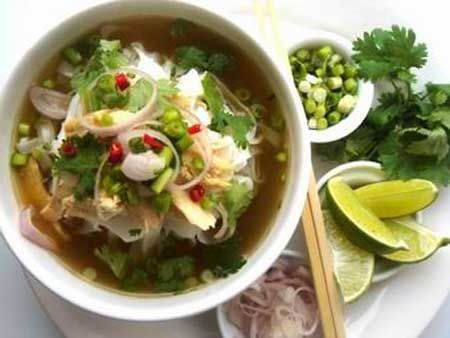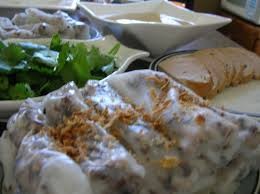Hello and welcome to VOV’s Letter Box, our weekly feature dedicated to listeners throughout the world. We are Mai Phuong and Ngoc Huyen.
A: First on our show today, we’d like to welcome Reginalou Annuciadao, our new listener from Brazil. Reginalou sent us a beautiful postcard of theater Jose De Alencar in Brazil and as a new listener to VOV, he is interested to know about VOV English section and its staff.
B: Thank you, Reginalou for tuning into our broadcasts. The English section was one of the first sections of VOV’s Overseas Service, which began its broadcast on September 7, 1945, the founding anniversary of Radio the Voice of Vietnam. In 1998, the English programs were officially broadcast on FM for the foreign community in Vietnam and the domestic audience.
A: Our program covers several features about Vietnam, its land and people. They include news, Current Affairs and features to keep you informed of multiple aspects of Vietnam: politics, economics, culture, society and more. For the schedule of our broadcast and frequency list, please check out our website at: www.vovworld.vn.
B: In regard to VOV English section’s staff, we now have 14 staff working on both AM and FM frequencies. As we have mentioned, our FM broadcasts were launched in 1998 to serve expats and English speakers in Vietnam.
A: Mohamad Shamim of Keralam State of India reported listening to our program on April 10 on the frequency of 12005 Khz from 01 to 0130 UTC and rated SINPO at 43434. He said the story about Hung King’s death anniversary was super and useful.
B: Mohamad also has a question: which city is known as the food capital in Vietnam?

Bonne Appetite! |
A: Vietnamese cuisine is known for its specific characteristics: harmonious, diverse, low in fat; flavor with a combination of many kinds of spices to increase the taste and the appetite of the dish. Thanks to Vietnam’s tropical climate, the long coast and huge range of mountain, the country is blessed with numerous varieties of plants. The main ingredients used in Vietnam are rice and its derivatives, fish sauce and vegetables. Most of tourists traveling to Vietnam are amazed at the omni-presence of rice and rice-related dishes.
B: Northern Vietnamese cuisine is not bold in any particular flavor - sweet, salty, spicy, bitter, or sour. Most Northern Vietnamese foods feature light and balanced flavors that result from subtle combination of many different flavoring ingredients.

Vietnamese Pho Bo- Beef noodle |
B: The abundance of spices produced by Central Vietnam's mountainous terrain makes this region's cuisine notable for its spicy food, which sets it apart from the two other regions of Vietnam where foods are mostly non-spicy. Once the capital of the last dynasty of Vietnam, Hue's culinary traditional features are highly decorative and colorful food, reflecting the influence of ancient Vietnamese royal cuisine. The region's cuisine is also notable for its sophisticated meals constituted by many complex dishes served at small portions.
B: The warm weather and fertile soil of Southern Vietnam create an ideal condition for growing a wide variety of fruit, vegetables, and livestock. As a result, foods in Southern Vietnam are often vibrant and flavorful with liberal uses of garlic, shallots, and fresh herbs. Sugar is added to food more than in the other regions. The preference for sweetness in Southern Vietnam can also be seen through the widespread use of coconut milk in Southern Vietnamese cuisine. Vast shorelines make seafood a natural staple for people in this region. Southern Vietnam has also been the region where influences from foreign cuisines (Chinese, Indian, French, and Thai etc.) are most prominent.

Steamed rice floured pancakes |
A: Cuisine represents the spirit culture of the Vietnamese. Daily meals are considered family reunion meal, when people gather together after a hard working day.
B: So, each region in Vietnam has its own specialty, but those from Hanoi capital city seems to be more popular.
A: Hanoi and its environs are the birthplace of many quintessential Vietnamese dishes, such as pho and bun cha, and the city is often cited as one of the world's great food capitals.
B: It's a street eater's paradise, with a plethora of options for those who want to eat like a local. In fact, many swear that the best food in Hanoi is found on the sidewalk, with dishes that often feature fish sauce, lemongrass, chilies, and other fresh herbs. Although vendors often cook in small shop fronts, they serve their wares on the sidewalk, on small plastic tables and chairs that can seem woefully inadequate for overgrown foreigners.
A: Hanoi is voted by CNN as one of Asia’s 10 best street food cities. Its delicious dishes include Bun Cha or grilled pork noodle, Pho or rice noodle soup served with beef, chicken and fresh herbs, Bun rieu cua or freshwater crab soup, barbecue chicken, sticky rice, iced coffee, nem cua be – spring rolls made with fresh crab meat, chao ca fish porridge, banh cuon or thin steamed rice flour pancakes filled with minced pork and cloud ear mushrooms and muc nuong or dried squid is grilled over hot coals before being shredded and served with a spicy sauce.
A: Vietnamese cuisine doesn't win any points for complexity. Tasting is believing. So, come to Hanoi and have a try. Bonne Appetite!
B: Samuel Ma Huaqing of Singapore on March 5 picked up the VOV English service signal at 12020 khz at 6:24, Singapore time. He said he enjoyed the song “the River of my childhood” as it was very melodious.
A: Samuel reported the reception quality in Singapore was excellent with almost no interfering noise and said he would listen to VOV more often to have a better understanding of Vietnam.
B: Using the Philips RL 452 receiver, Debakamal Hazarika of India listened to VOV program on April 5th on the frequency of 9550 Khz and rated the SINPO at 43343. Debakamal said he enjoyed the weekend music show with songs about environment protection.
A: Last on our show today, we’d like to acknowledge letters and emails from Mizan Rahman and Rana Dewal Ragiqul of Bangladesh, SB Sharma of India, Alan Fenix of the US, Hannu Kiiski of Finland, Peter Ng of Malaysia. David Ansell of the UK, Klaus Huber of Germany, and Danielle Marie Kopp of the US.
A: We’ll confirm your reports with QSL cards soon and give you VOV’s latest frequency list. We welcome your feedback at: English section, Overseas Service, Radio Voice of Vietnam, 45 Ba Trieu Street, Hanoi, Vietnam. Or you can email us at: englishsection@vov.org.vn. You’re invited to visit us online at www.vovworld.vn, where you can hear both live and recorded programs. Good bye until next time.